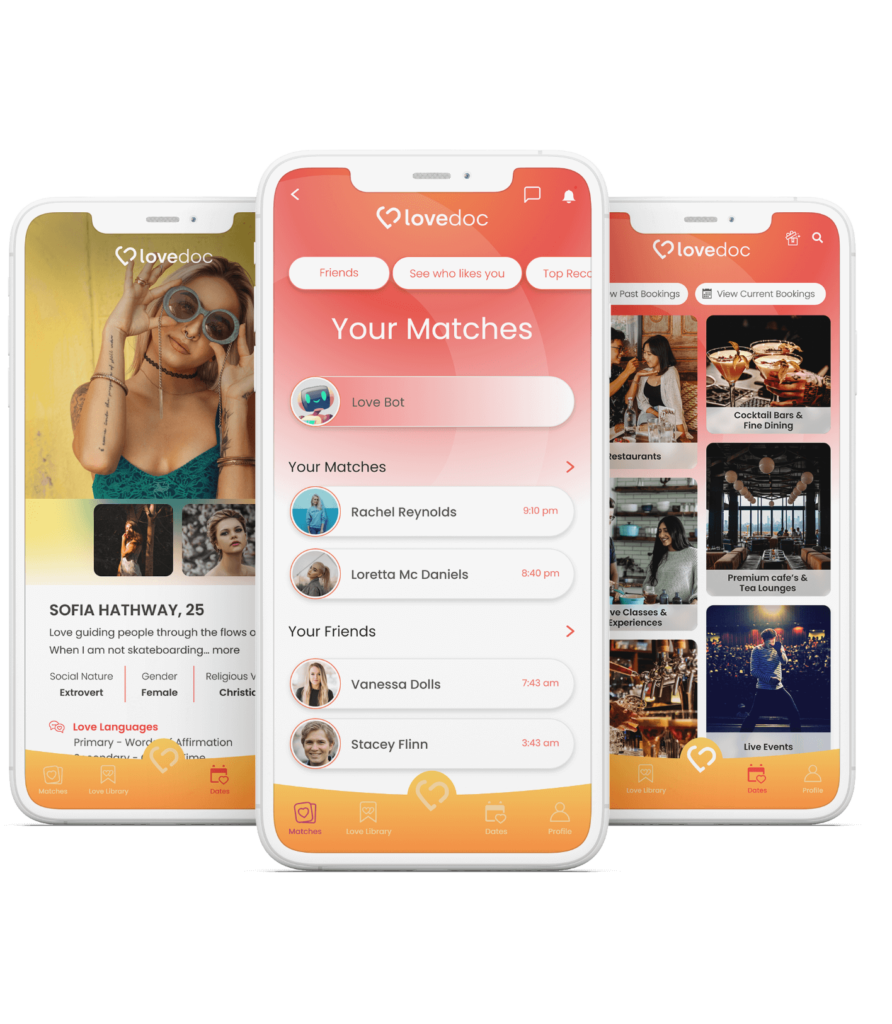The online dating industry has entered a new era of innovation and user-centric design. As digital relationships become more normalized and technology evolves, user expectations from dating apps have drastically shifted. In 2025, a dating app is not just about swiping left or right—it’s about delivering secure, personalized, real-time experiences that foster genuine connections. For that reason, every dating app development company must stay ahead of emerging trends to remain competitive and deliver value to its clients.
User engagement is no longer driven by novelty alone. With increasing digital saturation, people are more selective about which apps they use and trust. From advanced AI matchmaking to robust privacy protocols, the future of dating apps demands a combination of intelligence, security, and inclusivity. This guide explores the top features that every dating app developer must consider when building modern relationship platforms in 2025.
AI-Powered Matchmaking Algorithms
Artificial Intelligence has become an essential part of digital matchmaking. In 2025, AI will do more than match users by age, gender, or distance—it will analyze behavior, personality traits, and in-app engagement patterns to generate compatible pairings. The rise of machine learning tools allows dating apps to study how users interact, who they engage with most, and what type of people they are naturally drawn to. This level of personalization increases the likelihood of meaningful connections.
Users want matches that align with their lifestyle, communication style, and emotional needs. A dating app development company must integrate intelligent matchmaking engines that adapt and improve with every user interaction. By understanding preferences over time, apps can deliver better results and encourage long-term engagement.
In-App Video and Voice Calling
Video and voice interactions have become fundamental features in dating apps, especially post-pandemic. In-app calling allows users to gauge chemistry before meeting in person and adds a layer of safety to the dating experience. Offering secure, real-time video and voice calls directly within the platform keeps users engaged and reduces reliance on external apps.
A dating mobile app development solution in 2025 should support smooth and high-quality communication with integrated moderation features to protect users. Features like background blurring, voice masking, or real-time content filtering can create safer, more comfortable first interactions.
Strong Privacy and Security Controls
In today’s digital landscape, data privacy is a non-negotiable feature. A dating app developer must build apps that comply with GDPR, CCPA, and other local data protection laws. Encrypted communication, secure data storage, and real-time security alerts are all critical elements.
Users also expect more control over their profiles. They want to hide their last active status, blur photos until matched, or limit who sees their activity. Privacy-centric tools give users confidence that their personal details won’t be misused. Trust is foundational in dating apps, and in 2025, apps without strict privacy protections will struggle to gain traction.
Smart Chatbots and AI Assistants
Modern dating apps are integrating AI assistants to improve user engagement. These bots help guide users through onboarding, suggest opening lines, and even monitor for inappropriate behavior. A dating app development company that incorporates smart chatbot technology can offer users more value, especially during their initial days on the platform.
Chatbots can also act as a support system—answering FAQs, helping users set up their profiles, or nudging them to reply to conversations. When designed correctly, chatbots increase retention by making the app feel responsive and intuitive.
Geo-Intelligent Match Discovery
Basic location-based matching has been a standard for years, but users now expect more refined geo-intelligent features. Apps should recommend matches based on real-world habits such as shared commuting routes, common gym locations, or favorite coffee shops. This real-world overlap enhances the relevance of matches and improves the odds of meaningful relationships forming.
A dating app development strategy in 2025 should include precise geolocation tools and allow users to customize their location preferences without compromising privacy. Match discovery tied to local events or venues also fosters organic, real-time engagement.
Gamified Experiences for Engagement
Gamification can significantly boost user retention. Features like icebreaker games, quiz-based matching, reward points, or streak-based chatting systems can create a fun, addictive experience. In 2025, dating apps must be more than functional—they need to be enjoyable.
When built strategically, gamified experiences reduce swiping fatigue and add entertainment value to the app. Users feel rewarded for spending more time on the platform, which leads to higher retention and monetization potential.
Inclusive Features for All Relationship Types
Diversity and inclusion are critical for the success of any dating platform today. A dating app development company must prioritize inclusivity in 2025 by supporting multiple gender identities, relationship structures, and orientations. Filter systems should reflect a wide range of preferences beyond just age and location.
Inclusivity also extends to language support, cultural preferences, and accessibility features. Offering tools like customizable pronouns, dietary or religious filters, and voice-to-text capabilities helps ensure every user feels represented and comfortable on the app.
Seamless and Guided User Onboarding
The onboarding process sets the tone for the entire user experience. A clunky, overwhelming onboarding flow can drive new users away. Apps in 2025 must offer smart onboarding experiences using guided steps, AI-generated bios, or visual prompts to help users build attractive profiles quickly.
Social sign-ins, image imports, and interactive prompts reduce friction and increase user satisfaction. When done right, onboarding leads to faster matches and a greater chance of long-term engagement.
Cross-Platform Compatibility and Offline Functionality
With users accessing apps across multiple devices, it’s crucial to build dating apps that are responsive and functional across Android, iOS, web, and even wearable platforms. Cross-platform design ensures users have a consistent experience no matter where they log in.
Offline capabilities also provide convenience. Whether it’s browsing saved matches, composing messages, or editing profiles, allowing offline access enhances user flexibility and makes the app more reliable under poor connectivity conditions.
Non-Intrusive Monetization Strategies
The business model of dating apps must balance revenue and user experience. Users prefer apps that offer value without excessive ads or paywalls. In 2025, apps should offer freemium models, VIP subscriptions, and pay-as-you-go enhancements like profile boosts or premium filters.
A good dating app development company will design monetization flows that feel organic and optional, rather than forced. Analytics-driven monetization strategies ensure users are offered relevant upgrades based on their activity and preferences, increasing conversions without hurting retention.
How Leading Developers Deliver These Features
Creating a successful dating platform in 2025 requires deep technical expertise and user experience design. Leading app developers india are already implementing these advanced features into next-gen dating apps that scale globally. They focus not only on code and design but also on understanding user behavior, integrating AI, and ensuring long-term scalability.
Clients looking to enter the dating industry must choose a partner who understands modern matchmaking, privacy regulations, and mobile engagement strategies. From prototyping to post-launch analytics, the development process must prioritize performance, personalization, and innovation.
Final Thoughts on Future-Proof Dating Apps
As competition increases and user expectations evolve, offering generic dating features will no longer suffice. The future of dating apps is built around real-time interactions, intelligent algorithms, diversity, safety, and memorable experiences. These core features are not optional—they are essential.
Every dating app development company in 2025 must build with intention. They must focus on creating spaces where users feel understood, protected, and empowered to connect. The platforms that master this balance will not only grow but also redefine how digital love stories begin.



